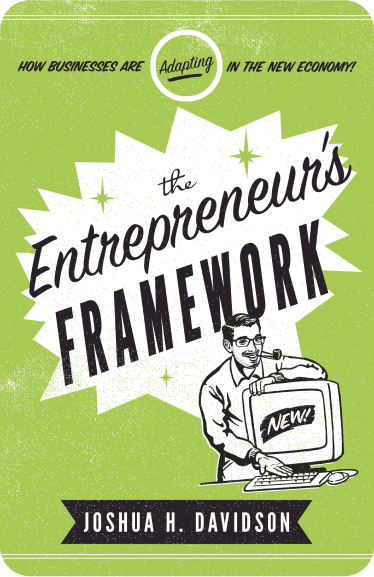Technology itself is a vast field. There have been many impactful figures over the years of all ethnicities who have made immense contributions. Many people don’t know how many pioneering black technologists shaped the modern world of tech as we know it.
While it’s important to recognize these voices year-round, in honor of Black History Month, we’re highlighting six Black technologists. They have had incredible impacts on our society, often in spite of great odds.
Even today, the playing field is far from level.
From the technology behind the personal computer, CGI and gifs, all the way to space, these talented technologists have each left their mark.
Dr. Frank S. Greene, Ph.D., One of the First Black Technologists
Dr. Frank S. Greene (born in 1938), is often hailed as one of the first Black technologists.
He was one of the first Black students to attend and graduate with a bachelors degree from Washington University in St. Louis.
He then went on to earn a Masters at Purdue University and served four years in the U.S. Air Force, reaching the rank of captain.
He was the first African-American cadet to graduate the Air Force Reserve Officer Training Corps (ROTC).
While in the Air Force, he worked as an electronics officer, creating high performance computers for the National Security Agency. He went on to develop high-speed semiconductor computer-memory systems in the 1960s at Fairchild Semiconductor R&D Labs, developing the patent for the integrated circuit that made Fairchild a leader in the semiconductor industry.
Greene earned his electrical engineering Ph.D. in 1970 from Santa Clara University, where he later served as trustee and adjunct lecturer.
Greene went on to create two software companies before founding NewVista Capital in 1986, through which he launched numerous startup companies, with a particular focus on women and minority entrepreneurs.
One innovation to come from his technology company was avionics equipment for the General Dynamics F-16 Fighting Falcon. He also influenced the space shuttle program and a communication system for scuba divers.
He started a scholarship program for African-American scholars from the San Jose area in honor of his wife, Phyllis Greene. She supported the NAACP throughout her career.
The Frank S. Greene Scholars program was established in 2001. It supports students in K–12 education in accessing mathematics and science education.
He also launched the GO-Positive Foundation and his VRE (Vision, Relationships and Execution) Leadership Model. Through this he mentored and served as an inspiration to high school students and young business professionals.
He passed away in 2009 after an impactful career as one of the most influential black technologists of all time.
Awards and Recognition:
- In 1991, he was inducted into the Silicon Valley Engineering Council’s Hall of Fame.
- Dr. Greene was awarded outstanding alumni awards from Washington University in St. Louis, Purdue University, and Santa Clara University.
- In 2009, Greene was featured in an exhibit at Palo Alto City Hall as one of the 50 most important African-Americans in technology.
Katherine Johnson, Mathematical Genius and Human Computer
The movie Hidden Figures (based on the book) featured fictionalized portrayals of real-life Black female technologists. This included Katherine Johnson, alongside Dorothy Vaughan, and Mary Jackson.
Beginning in 1935, the National Advisory Committee for Aeronautics (NACA), a precursor of NASA, hired hundreds of women as computers.
These so-called ‘human computers’ performed mathematical equations and calculations by hand. During World War II, NACA began recruiting African-American women with college degrees to work as computers.
However, segregation policies required that these women work in a separate section, called the West Area Computers. As the years passed and the center evolved, the West Computers became engineers and electronic computer programmers.
She Showed Brilliance from an Early Age
Johnson herself showed early brilliance in West Virginia schools by being promoted several years ahead of her age.
She attended a high school on the campus of West Virginia State College by age 13. She then began attending the college at age 18. After graduating with high honors, she started work as a schoolteacher in 1937.
Two years later, when the college chose to integrate its graduate schools, Johnson and two other black male students were offered spots. She quickly enrolled, but left to grow her family.
In 1953, when she was back in the workforce, Johnson joined the West Area Computing section at Langley.
She began her career working with data from flight tests. However, her life quickly changed after the Soviet Union launched the first satellite, Sputnik, in 1957.
Some of her math equations were used in a lecture series compendium called Notes on Space Technology. These lectures were given by engineers that later formed the Space Task Group, NACA’s section on space travel.
She did trajectory analysis for Alan Shepard’s May 1961 mission Freedom 7. This was America’s first human spaceflight. She also worked on the Space Shuttle and the Earth Resources Technology Satellite (ERTS, later renamed Landsat). Johnson also authored or coauthored 26 research reports.
In 1962, as NASA prepared for the orbital mission of John Glenn, Johnson was called upon to do the work she’s become most known for.
Computers had been programmed with the orbital equations that would control the captule trajectory in Glenn’s Friendship 7 mission from liftoff to splashdown. Howeverm the astronauts were wary of putting their lives in the care of the hiccup-prone electronic calculating machines.
As a part of the preflight checklist, Glenn asked engineers to “get the girl”—Johnson — to run the same numbers through the same equations that had been programmed into the computer, but by hand, on her desktop mechanical calculating machine. “If she says they’re good,’” Katherine Johnson remembers the astronaut saying, “then I’m ready to go.”
Glenn’s flight was a success. As such, it marked a turning point in the competition between the United States and the Soviet Union in space. Johnson stayed at Langley for 33 years, and today, two NASA facilities are named in her honor.
Awards and Recognition:
- Presidential Medal of Freedom in 2015
- Presented with the Silver Snoopy Award by NASA astronaut Leland D. Melvin and a NASA Group Achievement Award in 2016
- Congressional Medal of Honor
- In 2021, she was inducted into the National Women’s Hall of Fame
Roy L. Clay, Grandfather Grandfather of Silicon Valley
Born in 1929, Clay attended segregated schools before receiving a full scholarship to Saint Louis University, where he was one of the first Black men to attend and graduate with a degree in mathematics.
With dreams of being a baseball player having long faded by then, Roy quickly discovered finding work in his chosen field of technology quite difficult for a person of color.
He became a school teacher, and after many fruitless cross-industry interviews, decided to teach himself how to code, eventually becoming one of the first successful black technologists in the US.
By 1958, he was a programmer at Lawrence Livermore National Laboratory. For the time, his employment in this field was quite unusual, but his talents simply could not be denied. His early work involved writing software for a radiation tracking system to study the aftermath of a nuclear explosion.
Working there, he met David Packard (co-founder of HP), who encouraged Clay to apply for a job.
His Life and Work in Silicon Valley
Once there, Clay worked as a computer consultant in Silicon Valley and became a key figure in the development of HP’s computer divisions. He would eventually lead the team that engineered HP’s entrance into the computer market, the HP 2116A, one of Hewlett-Packard’s first mini-computers.
Clay stayed at HP until the mid-seventies, eventually rising to being the highest-ranking African-American member of staff. Today, he’s referred to as the Godfather of Silicon Valley.
And, he’s still working at his own company as the founding director of ROD-L Electronics, where the dielectric withstand test, or high potential (hipot) safety test was developed.
The company is recognized not only for its technical innovation, but its community work. Clay was even involved with local politics, and was the first African-American to join the city council of Palo Alto, and was elected Vice Mayor in 1976.
Aside from his technical achievements, Clay’s most influential ideals were demonstrated by establishing programs to help more African-Americans get interested in tech and get into Silicon Valley throughout his career.
Awards and Recognition:
- In 2002, Clay was elected by the African American Museum and Library at Oakland as one of the most important African-Americans working in technology.
- In 2003, he was inducted into the Silicon Valley Engineering Council’s Hall of Fame.
Clarence “Skip” Ellis, Pioneer of Remote Work

In 1958, at age 15, Ellis applied for a job as a graveyard shift computer operator at the manufacturing firm Dover to earn money to help his family. He was the only applicant. Although his job title was computer operator, his main duties were to walk around all night and be visible to prevent break-ins, and to watch over, but not touch, the company’s new computer.
At the time, Dover’s computer was based on vacuum tube technology (2,400 vacuum tubes), used punch cards as input and output, and filled an extremely large room. In Ellis’ free time on the job, he read and re-read the dozens of computer manuals that came with the machine.
Expert Problem Solver
He taught himself as much as possible about the machine without touching it. Two months after he started the job, Ellis helped the company through an emergency. They had run out of unused punch cards, and needed to use the computer to process payroll by morning.
During the emergency, Ellis was the only one who knew how to recycle the used punch cards. He lifted the hood of the computer and disabled the parity check circuitry.
The used punch cards were recycled and the company was able to process the payroll. After this experience, the company began to seek him out whenever they had computer problems, and his passion for computing was ignited.
A Chicago native, Clarence “Skip” Ellis was the first African-American to earn a Ph.D. in computer science, earned from the University of Illinois at Urbana-Champaign in 1969.
Ellis had received a bachelor’s degree in mathematics and physics from Beloit College in Wisconsin. While there, he helped set up the school’s first computer laboratory, where he soon spent many more hours developing his interest in computers.
While studying, Ellis worked on hardware, software, and the development of ILLIAC IV supercomputer. He had a long career at major tech companies like Bell Telephone Laboratories, IBM, Xerox, and more.
A Remote Work Pioneer
Among his many contributions to computing, he is most well-known for his pioneering work in groupware and computer-supported cooperative work (CSCW) systems.
At the Palo Alto Research Center where he worked from 1976 to 1984, Ellis spearheaded a group that invented Officetalk. It was the first office system to use icons and ethernet to allow people to collaborate from a distance. Ellis was a real pioneer in this field of operational transformation (examining the functionality in collaborative systems), which is found in computer applications today like Google Docs.
Does that make him the grandfather (maybe great grandfather) of remote work?! Perhaps. But either way, Ellis has had a hand in shaping the technology we use today here at Chop Dawg!
In addition to his career in industry, Ellis held teaching positions at Stanford University, the University of Texas, the Massachusetts Institute of Technology, and the Stevens Institute of Technology.
He also taught in Taiwan under an AFIPS teaching fellowship. Ellis finally joined the University of Colorado at Boulder in 1992 as a professor of computer science and retired in 2010. He was an early leader in that university’s research on human-centered computing.
During his later years at Colorado and into his retirement, Ellis worked with higher education institutions in Africa, receiving a Fulbright grant to support his educational work in Ghana before passing away in 2014.
Awards and Recognition:
- Ellis was named a Fellow of ACM in 1998 in recognition of his leadership in ACM SIGOIS and his impact in the office information systems field.
- In 2013, Ellis won a Fulbright Scholarship to teach and perform research in the computer science department at Ashesi University.
Marc Regis Hannah, A Black Technologist known as the Founder of Special Effects
We have Marc Regis Hannah to thank for the computer-generated graphics in Jurassic Park, Aladdin, Beauty and the Beast. An electrical engineer and computer graphics designer in the ‘80s and ‘90s, he co-founded Silicon Graphics, Inc. in 1982, where he later become principle scientist.
His 3D computer graphics and special effects technology has been used in major motion films as well as commercials, the intro for Monday Night Football, and by George Lucas’s visual effects studio, Industrial Light & Magic.
Marc first attended the Illinois Institute of Technology, with funding from a scholarship awarded by AT&T’s Bell Laboratories, receiving his B.S. degree in electrical engineering in 1977, before going on to Stanford University where he obtained his M.S. degree in 1978 and his Ph.D. degree in 1985.
While at Stanford, Hannah worked with Jim Clark, a professor of engineering who shared a mutual interest in 3-D graphics. In 1982, the pair, along with five other partners, founded Silicon Graphics, Inc., attracting over $30 million in venture capital support.
Their early success largely stemmed from Clark’s invention of the “Geometry Engine,” a computer chip/ processor that improved 3-D image manipulation, allowing a computer user to easily see an image from multiple angles, which Hannah then worked to perfect.
Hannah’s technology is also widely used in scientific settings such as in aerospace and biomedical research labs.
Silicon Graphics, Inc. grew into an entertainment industry powerhouse in the 90s, with its technology used in blockbuster films produced by George Lucas and Steven Spielberg. Hannah played a key role in lowering the price of many Silicon Graphics, Inc. products, extending the company’s reach into new markets, and planning for its future expansion.
In 1993, Silicon Graphics, Inc. reached a milestone, revenues over $1 billion, with thousands of employees around the world.
Hannah then became co-owner of Rondeau Bay, a construction firm in Oakland, California with a specialty in replacing sewer systems in an eco-conscious manner.
Other new companies also attracted Hannah’s attention. He joined the Board of Directors for Warp Speed Communications and Magic Edge. The latter specializing in providing visual stimulation (hardware) for amusement park rides.
More On Hannah
He’s also served as Vice President of Technology of the African American-owned Omniverse Digital Solutions, and SongPro, a company specializing in digital music players and delivery systems, as Chief Technology Officer.
Hannah also played a role in the development of “Black Achievers in Science,” a traveling exhibit created by the Museum of Science and Industry in Chicago. Today, we might even consider Hannah to be the founder of special effects.
Awards and Recognition:
- Professional Achievement Award(s) from the Illinois Institute of Technology and the National Technical Association
- Holds over a dozen patents
- Kilby International Young Innovator Award in 1995
Lisa Gelobter, Online Video Pioneer

Lisa Gelobter was born in 1971 and is a computer scientist, technologist, user-centered designer and chief executive.
She graduated from Brown University in 1991 at the age of 20 with a computer science degree and a concentration in artificial intelligence and machine learning.
She was the Chief Digital Service Officer for the United States Department of Education during President Obama’s terms, where she helped to streamline HealthCare.gov, improving the UX and reducing overall application time and revamping the College Scorecard.
Prior to public service, Gelobter was the Chief Digital Officer for BET Networks and a member of the senior management team for the launch of Hulu.
Gelobter also happens to be behind the creation of Shockwave, coding ActiveX control for the player, while coordinating the engineering transition among many other things.
She is a pioneer in the development of video on the internet including Brightcove, Joost, and The FeedRoom. If you’ve ever enjoyed sending gifs to friends and colleagues, her work helped make that technology possible!
A Long History of Success
In 2016, Gelobter founded tEquitable, an independent, confidential platform to address issues of bias, discrimination and harassment in the workplace.
She raised more than $2 million for the 3rd-party, tech-enabled Ombuds platform; a confidential sounding board for employees to address issues and for companies to make workplaces more inclusive.
Gelobter became one of only 34 Black women to ever raise $1 million in venture capital. She uses her influence and considerable talents in tech today to help others advance in their careers.
Awards and Recognition:
- Fast Company’s Most Creative People
- Former member of the New York Urban League STEM Advisory Board
Final Thoughts on these Groundbreaking Black Technologists
What’s most striking is just how many of these amazing individuals ultimately chose to use their influence and talents to help lift others up, and become advocates for change.
We should all strive to be like them in our own professional careers whenever the opportunity presents itself.
What do you think? Comment below.
Since 2009, we have helped create 350+ next-generation apps for startups, Fortune 500s, growing businesses, and non-profits from around the globe. Think Partner, Not Agency.
Find us on social at #MakeItApp’n®

















